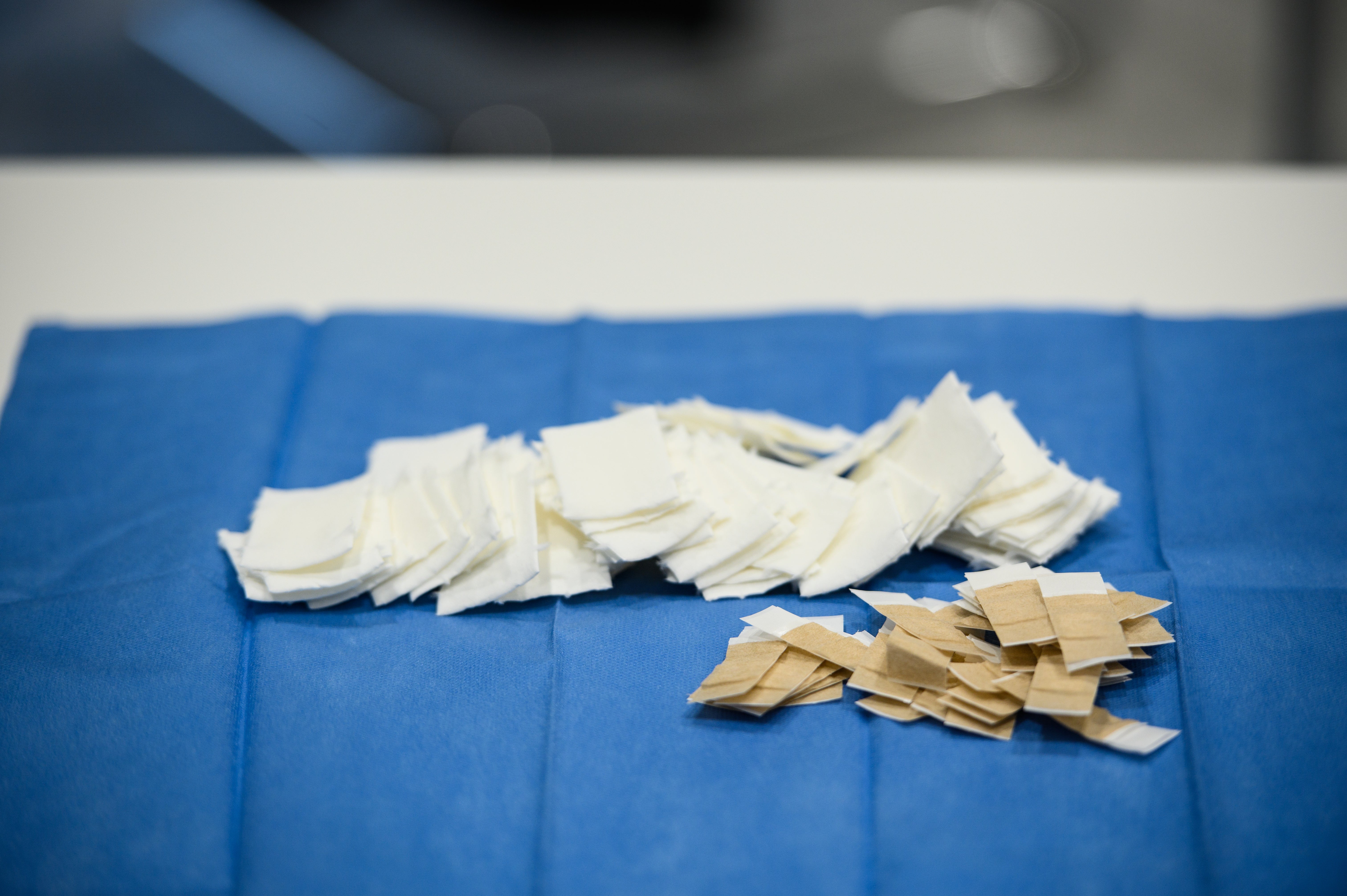Smart bandage reveals wound healing status without requiring doctors to remove dressing
Bandage measures moisture levels with very high sensitivity and transmits data to a smartphone

Scientists have developed a novel bandage that could help doctors monitor wound healing without needing to remove the dressing.
The new “smart bandage” contains a sensor that measures wound moisture levels with very high sensitivity and transmits the data to a nearby smartphone, according to the study, published on Monday in the journal Frontiers in Physics.
Scientists believe the novel technology could enable doctors to monitor wounds without requiring them to remove the bandage.
While the moisture level of a wound is one of the most important factors that influence its healing, checking this parameter conventionally involves removing the dressing – a process that may potentially damage delicate tissue.
The smart bandage, made using a conductive polymer called PEDOT:PSS, provides a method to monitor wound moisture levels non-invasively, the scientists say.
This polymer is applied onto gauze and applied on the wound with commercially available bandage materials.
“PEDOT:PSS is an organic semiconducting polymer that can be easily deposited on several substrates as a standard ink,” said Marta Tessarolo from the University of Bologna in Italy in a statement.
Any significant variation in the moisture level of the wound, the scientists say, causes a change in an electrical signal measured by the sensor.
“We also incorporated a cheap, disposable and bandage-compatible RFID tag, similar to those used for clothing security tags, into the textile patch,” Dr Tessarolo explained.
“The tag can wirelessly communicate moisture level data with a smartphone, allowing healthcare staff to know when a bandage needs to be changed,” she added.
When the scientists exposed the bandage to artificial wound exudate – the liquid that seeps from wounds – they found that it was highly sensitive, providing drastically different readings between dry, moist, and saturated conditions.
“A proper combination of gauze and absorption layer can thus be used to obtain an entirely passive smart bandage able to give an RFID tamper alarm when the wound switches from wet to dry and vice-versa,” the scientists wrote.
Based on the results, the researchers believe the smart bandage could be a valuable tool in wound management.
“We developed a range of bandages with various layers and different absorption properties and characteristics. The idea is that each type of wound could have its own appropriate dressing, from slowly exuding wounds to highly exuding wounds, such as burns and blisters,” Dr Luca Possanzini, another co-author of the study, said in a statement.
However, the researchers believe further studies are needed to tweak the sensor features for optimal healing before the smart bandage can be applied to various types of wounds.
Subscribe to Independent Premium to bookmark this article
Want to bookmark your favourite articles and stories to read or reference later? Start your Independent Premium subscription today.

Join our commenting forum
Join thought-provoking conversations, follow other Independent readers and see their replies